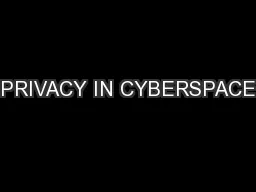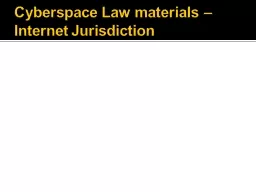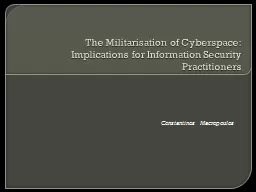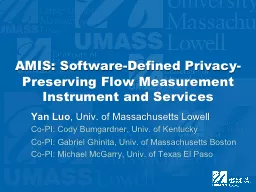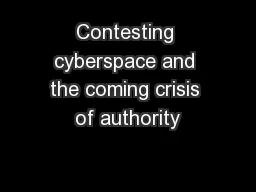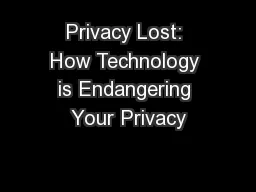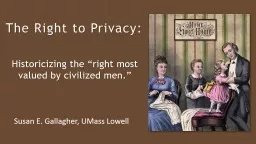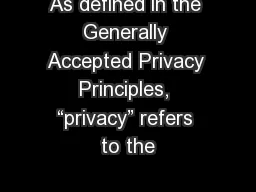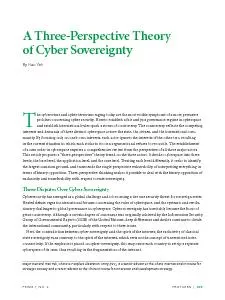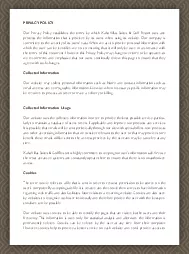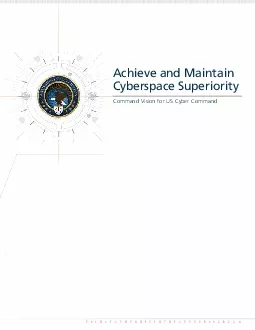PPT-PRIVACY IN CYBERSPACE
Author : pasty-toler | Published Date : 2017-10-16
CSH6 Chapter 69 Privacy in Cyberspace US and European Perspectives Henry L Judy Scott L David Benjamin S Hayes Jeffrey B Ritter Marc Rotenberg amp M E Kabay Topics
Presentation Embed Code
Download Presentation
Download Presentation The PPT/PDF document "PRIVACY IN CYBERSPACE" is the property of its rightful owner. Permission is granted to download and print the materials on this website for personal, non-commercial use only, and to display it on your personal computer provided you do not modify the materials and that you retain all copyright notices contained in the materials. By downloading content from our website, you accept the terms of this agreement.
PRIVACY IN CYBERSPACE: Transcript
Download Rules Of Document
"PRIVACY IN CYBERSPACE"The content belongs to its owner. You may download and print it for personal use, without modification, and keep all copyright notices. By downloading, you agree to these terms.
Related Documents

